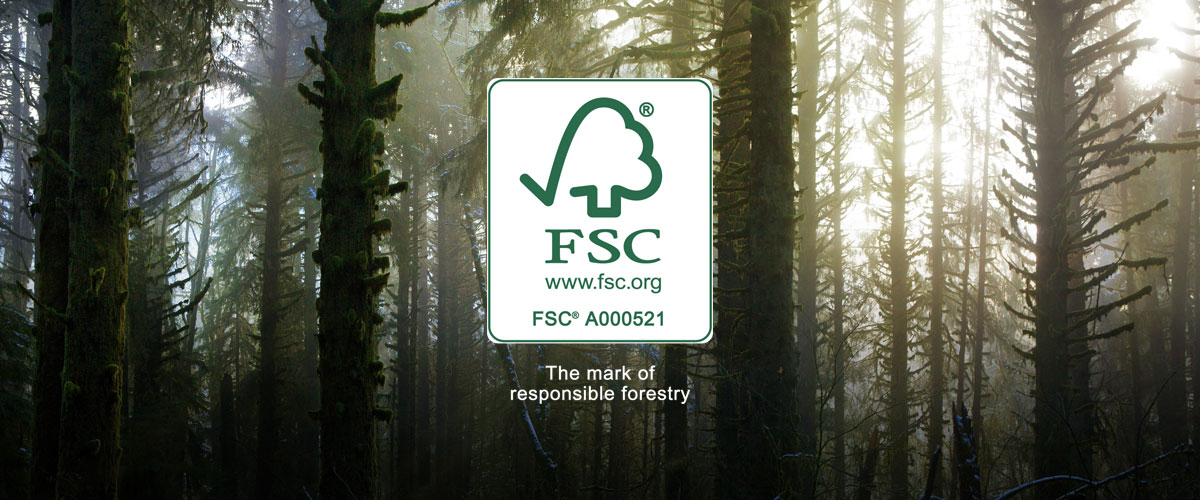Witnessing Changing Sustainability Norms for the World’s Forests: An Auditor’s Retrospection

Author: Robert Hrubes, Executive Vice President
“What we are doing to the forests of the world is but a mirror reflection of what we are doing to ourselves and to one another.”
With these words, Chris Maser, author of Forest Primeval: The Natural History of an Ancient Forest, sums up the case for sustainable forestry. Forests are the lungs of the earth, the home to a fascinating diversity of flora and fauna, the progenitor of natural medicines, and the source of fire and building materials upon which so much of civilization has depended. Over the past few decades, however, it has become increasingly clear that the earth’s forests cannot continue to be treated simply as resources for the taking, and that we must become active stewards of the forests to ensure their longevity into the future.
As a professional forester for more than 40 years, and a certification auditor for the past two decades, I’ve had a front row seat to witness and participate in the growing change in attitudes about how we manage our forests.

Early Days
I started my career working for the US Forest Service during the very contentious 1970s and 1980s. Forest owners and workers were pitted against environmental champions in a seemingly intractable, polarizing conflict over livelihoods versus forest protection.
Back then, the Forest Service was going through a lot of changes, and was subject to intense criticism for its environmental record. I felt a personal tension when I came to work every day. I had to park my values and my personal views about the forestry debates of those days at the door but, as time went on, I grew more and more uncomfortable. Ultimately, I left, and decided to offer consulting services, notably including environmental organizations, a quite uncommon move in those days for a professional forester. I worked as an expert on forestry matters for many high profile clients. During that time, I was attacked, including an unsuccessful challenge of my professional forester’s license, but I came to work every day with my personal values intact, focusing on the environmental drivers of resource management, not just the financial drivers. It was at that point that I started to move sustained yield towards sustainability – gaining an understanding of how strong environmental and social principles might inform and reinforce, rather than undermine, business value.
One day in 1991, I received a call from a company I had never heard of, Scientific Certifications Systems (now called SCS Global Services), saying, “We need your help!” SCS was developing a new responsible forestry certification program, and needed my expertise. That phone call changed my life and career! For nine years, I worked to design what’s now called SCS’ Forest Conservation Program, and acted as lead auditor for the program. Finally, I gave in to the inevitable, and joined SCS as Senior Vice President and head of its Natural Resources Division, while also maintaining active involvement in on-the-ground audits.

The FSC is Formed
When I started working with SCS, there was no Forest Stewardship Council (FSC) or any other responsible forestry certification program. SCS’ Forest Conservation Program was breaking new ground. At the same time, a broad range of stakeholders was getting together to try to formulate this notion of independent forest management certification with “leadership” environmental stewardship standards at the core. SCS became a major player in helping to create the FSC. I represented SCS as an expert in planning meetings, which resulted in the creation of the FSC two years later. In 1993, I was elected to the FSC’s Founding Board of Directors. I spent five years on the FSC Founding Board to put into motion what is now this amazing global success story. I am particularly proud of the degree to which the environmental, social, and industry stakeholders came together to overcome their differences by identifying common principles of environmental stewardship and socio-economic responsibility to build a viable path forward.
The Success of Certification
The whole premise of voluntary certification schemes like FSC is the message to forest owners and managers that if you voluntarily pursue certification, and make the necessary modifications to your practices to demonstrate that you meet the standards, you will derive direct business benefit. That’s the motivation, and that’s why certification schemes around the world have mushroomed.
One benefit to clients is a reassurance to customers that if they are doing business with you and buying wood products from you, they are not buying into a public relations disaster waiting to happen. It’s hard to put a dollar value on that. Another benefit is market access. For instance, offshore producers of wood products who want to sell into the U.S. and European markets rely heavily on the value of their third-party certifications. Being certified also helps to reassure customers, forest communities and neighbors, and government regulators that operations are environmentally and socially responsible, and reduces lawsuits and fines – providing a very real monetary value that can reduce costs for certified operations.
SCS became one of the three original FSC-accredited certification bodies. Since that time I have led, with the dedicated support of a dynamic team of resource professionals, the expansion of the company’s FSC forest management and chain-of-custody certification business as well as the establishment and growth of the company’s forest carbon offset verification program, now affiliated with the leading schemes such as the Climate Action Reserve (CAR), the Verified Carbon Standard (VCS), the Climate Community and Biodiversity Standard (CCB), the Gold Standard, and California ARB’s Cap and Trade verification programs, working on REDD, Improved Forest Management, and other AFOLU projects. And throughout those years of business development, I have made it a priority to remain engaged as a practitioner, conducting and reviewing audits. These audits remain near and dear to my heart because they most directly relate to recognizing and rewarding responsible and sustainable resource management for forests. This work has taken me around the world, exposing me to widely diverse, innovative forest operations in places as far flung as Australia, Papua New Guinea, Indonesia, Malaysia, Japan, Scandinavia, Germany, Canada, Mexico, the African continent, South America, and of course, the United States.
Life as an Auditor
As an auditor, you learn quickly to avoid checking bags when you fly, because life can be miserable if you get separated from your bag. You also learn to carry a good raincoat, write-in-the-rain notepads, and diameter tapes and compasses. You must be willing to work long hours, with a sense of adventure. You also have to be comfortable being the center of attention, while maintaining your focus and independence.

Recently, I had the opportunity to spend two days flying in a helicopter to survey the entire Sierra Nevada while working on a carbon project. I kept thinking, “Wow! I’m getting paid to take this amazing eco-tourism journey that most people pay big bucks for.” So, travel and the ability to meet amazingly diverse people like forest managers, ecologists, hydrologists and sociologists, not to mention indigenous peoples and intensely interested stakeholders, has enabled me to develop an incredible network of colleagues and friends around the world. The great thing is that all these people are involved in or concerned about forest management and, by their involvement, are bringing about positive change.
For Inquires or Comments: Contact us Today.
